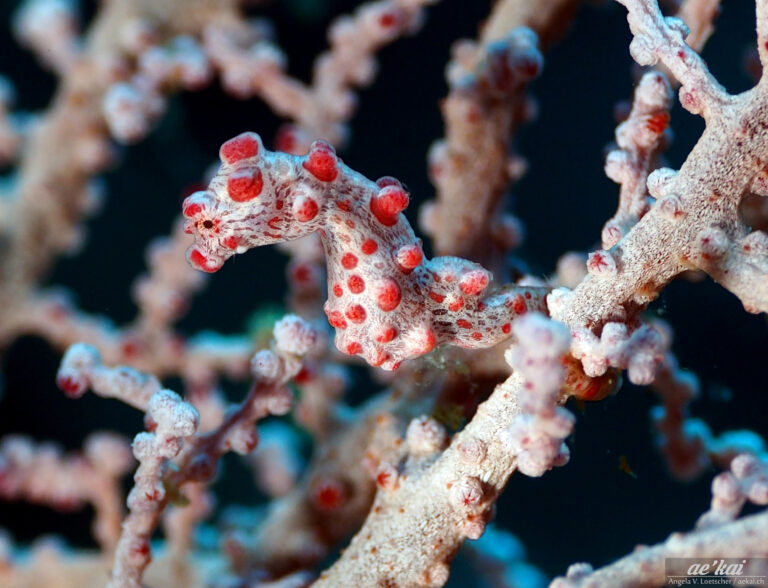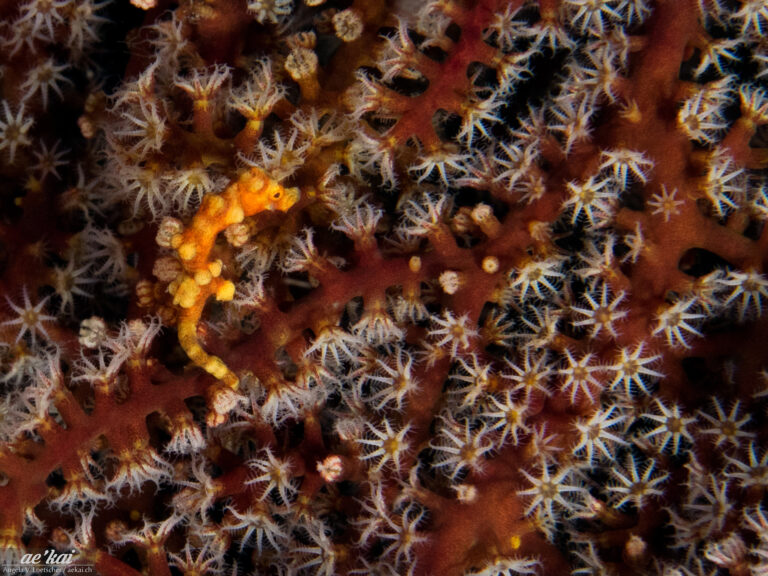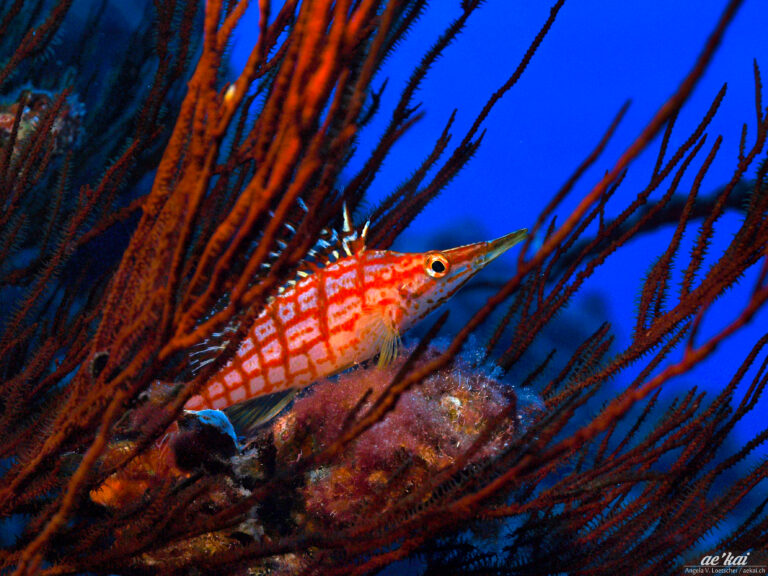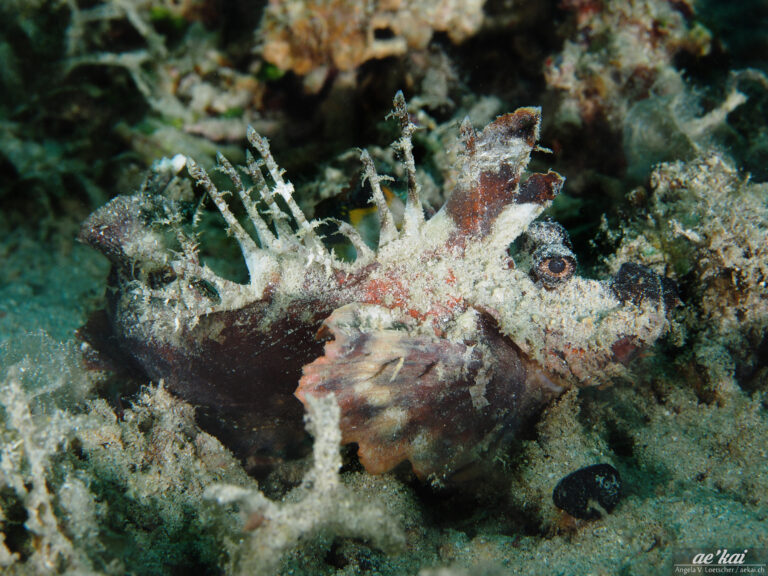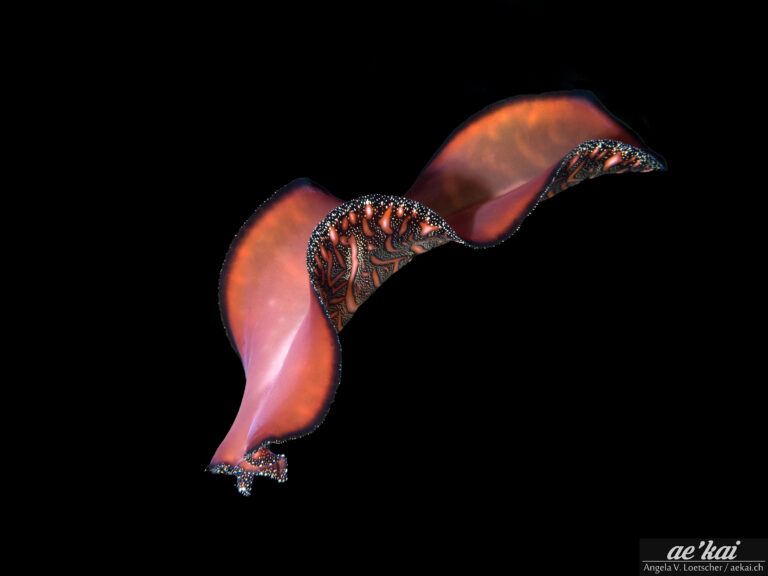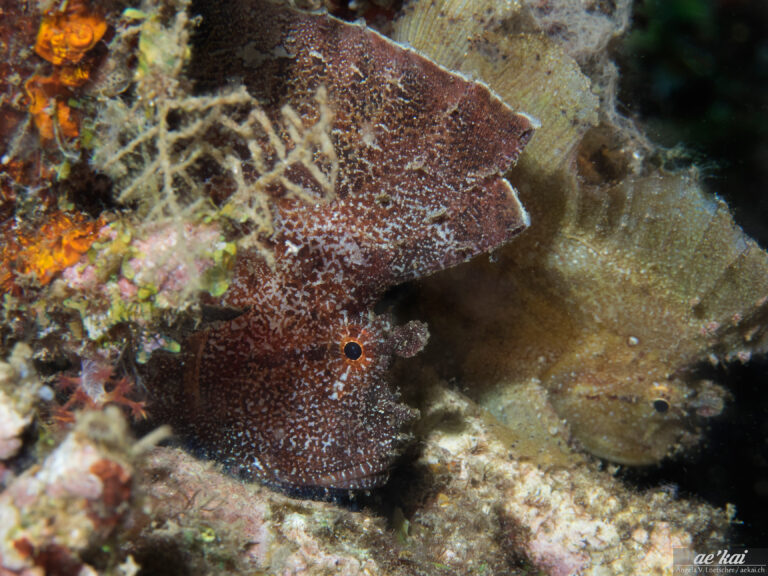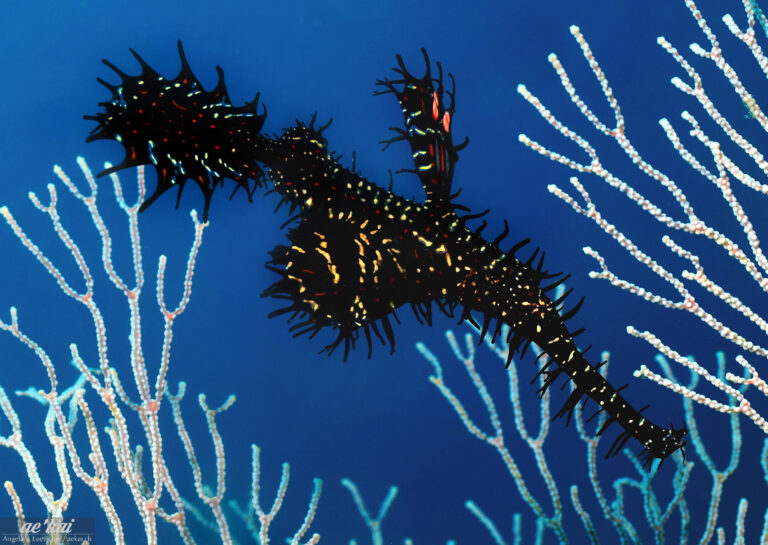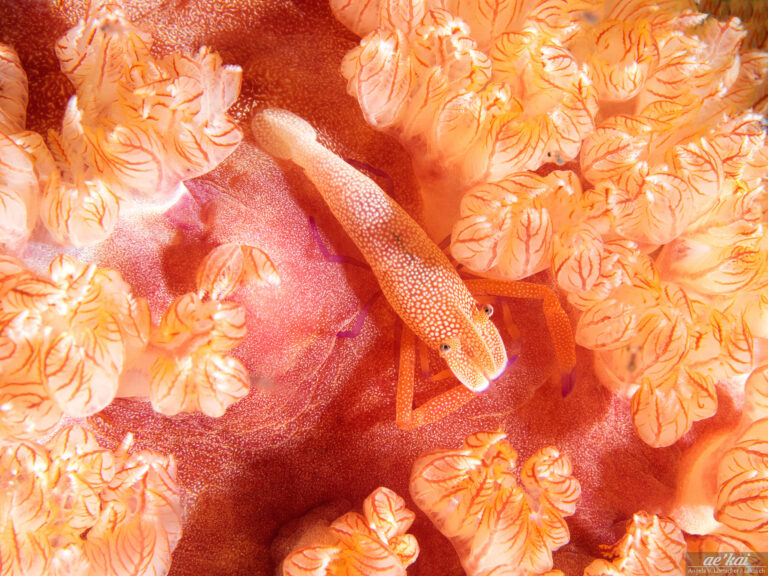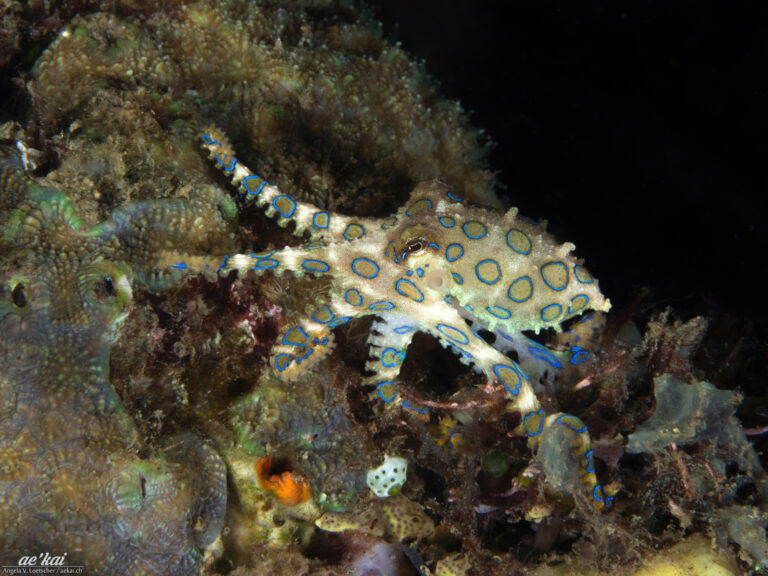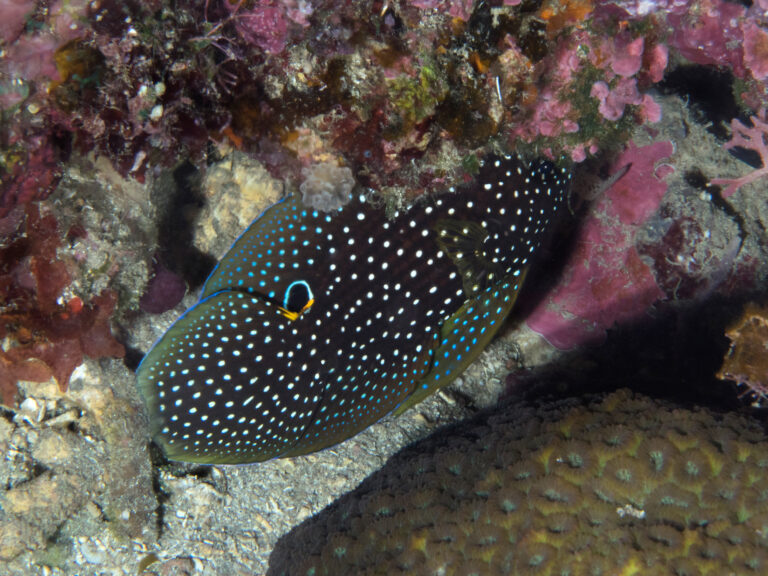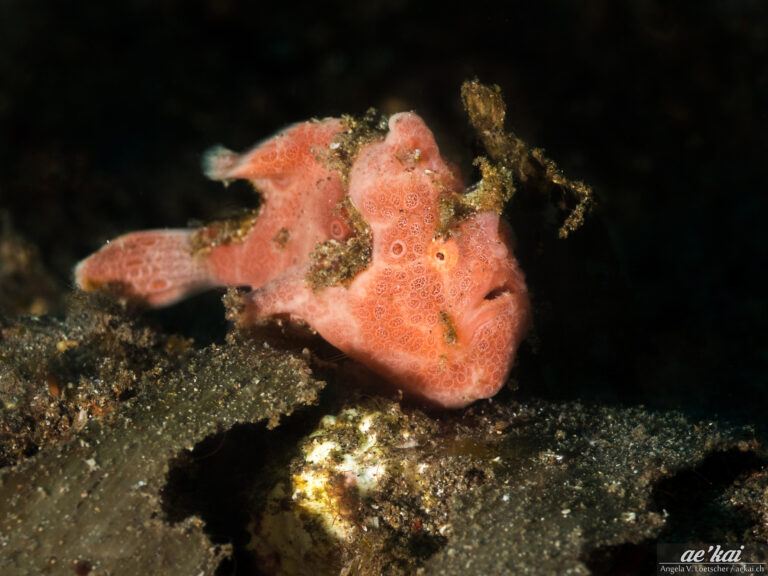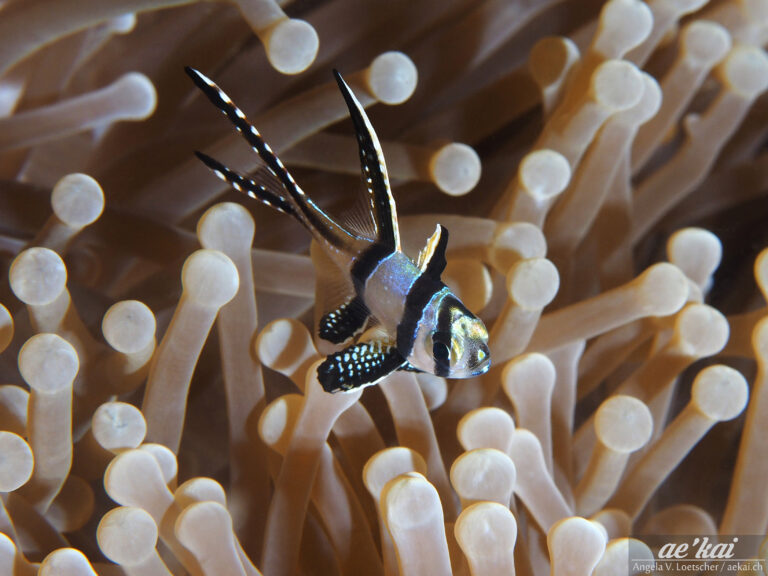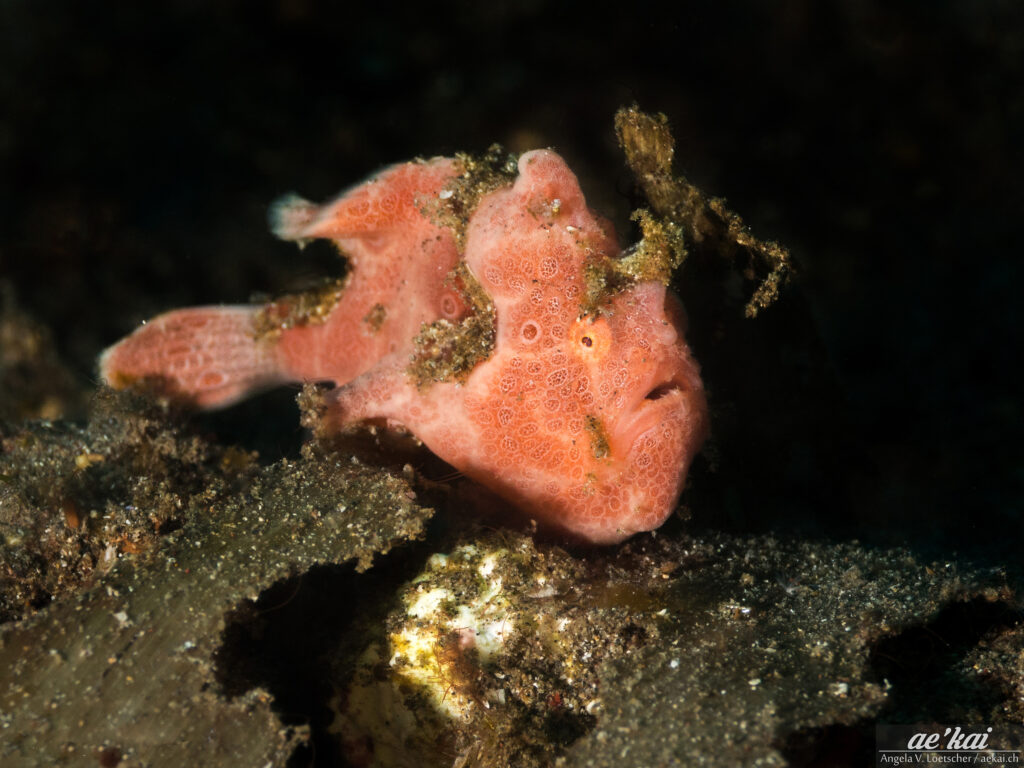
EN: Painted Frogfish
DE: Gemalter Anglerfisch | Rundflecken-Anglerfisch
Family
Frogfishes
(Antennariidae)
Size
max. 20 cm
Diet
Fish, etc.
Distribution
Red Sea &
Indo-Pacific
The Painted Frogfish belongs to the family of frogfishes (Antennariidae) and is widespread in the Red Sea as well as in the Indo-Pacific, although not seen everywhere equally often. It lives on sandy bottoms near sponges (more rarely corals or algae tufts) and in shallow water at depths of up to 75 meters (on average at 15 meters). With a maximum length of about 30 cm (but usually 10-16 cm) it is one of the larger members of the family. It is very location-loyal, except if harassed too often.
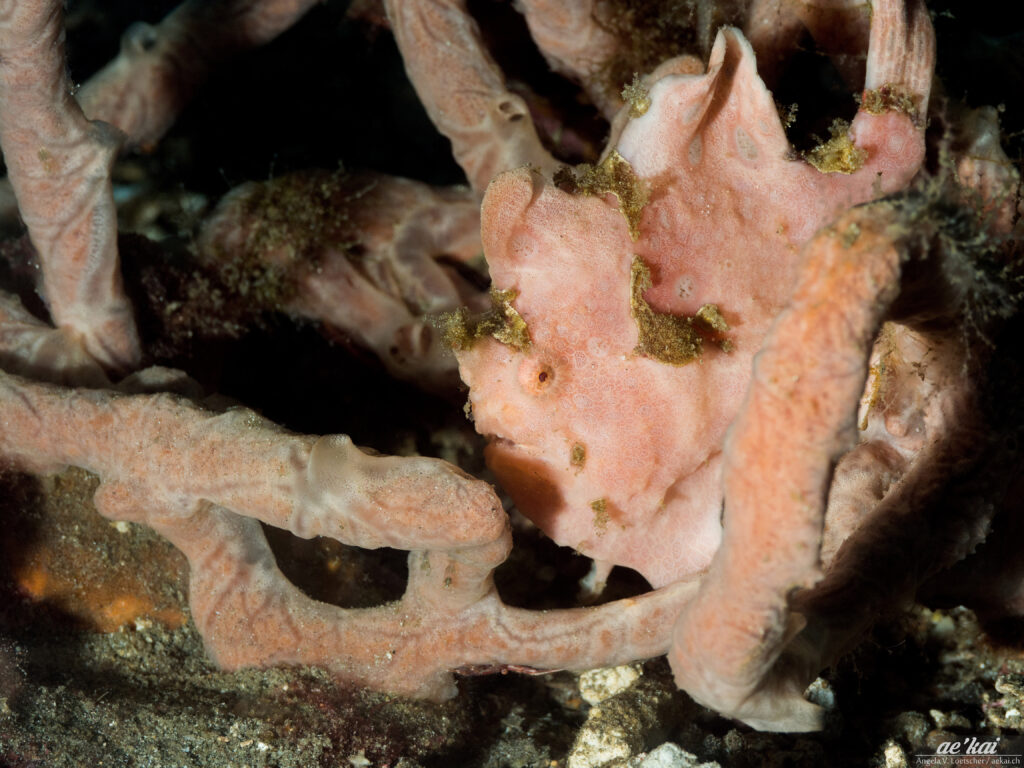
The basic color can be anything between black and white. In any case, it takes on the color of its surroundings within a few days of relocating to imitate sponges or corals. The structure of his skin looks similar to that of a sponge and shows roundish spots as well as saddle spots.
In his species the rod, called illicium, is about twice as long as the second ray of the dorsal fin, and the bait attached to it, called Esca, looks like a small fish. The strong pectoral fins are angled and allow the frogfish to move along with its ventral fins. The pectoral fins look like frog legs when standing, which is why the common name “Frogfish” fits the animal perfectly.
Antennarius pictus is solitary living fish and tolerates other frogfishes only during the mating ritual in its proximity.
It is a carnivorous ambush predator and eats not only fishes up to the same size as itself, but also fellow frogfishes. Antennarius pictus forms bands of tiny eggs after mating. If the larvae in the egg have grown up enough, they hatch and go into a pelagic phase, only to settle down again in the reef later as young animals. Juveniles can be completely black with orange dots, imitating poisonous gastropods, or colored, imitating sponges. The mating season is a particularly dangerous time for male frogfish. If they approach an actually mating willing but very hungry female too carelessly, the male usually ends up as food instead of as a partner. Antennarius pictus is very closely related to the warty frogfish, Antennarius maculatus, with which it can easily be confused.
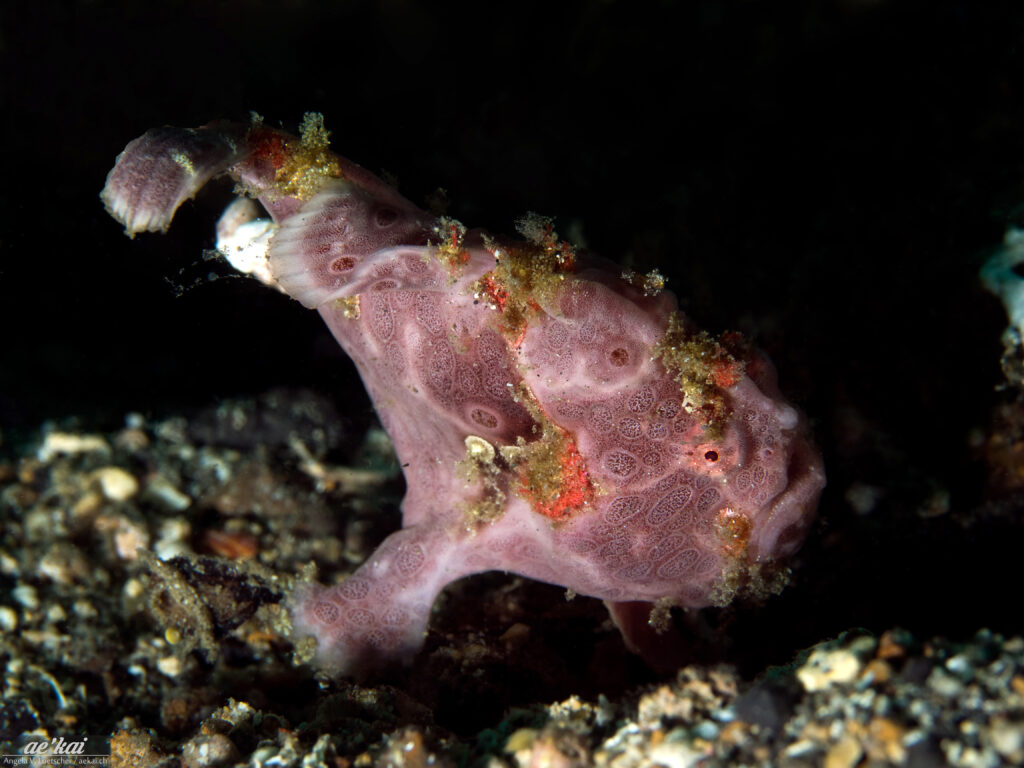
Under no circumstances should underwater photographers (or videographers) gather two or more frogfish for a picture, as this usually ends in tragedy. As mentioned, frogfishes eat each other.
